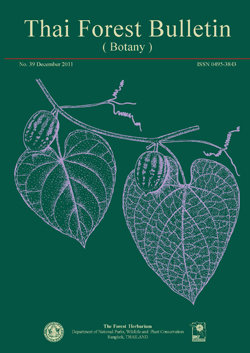Molecular phylogeny of Magnoliaceae based on plastid DNA sequences with special emphasis on some species from continental Southeast Asia
Keywords:
chloroplast DNA, Magnolia, Thailand, Vietnam, Peninsular MalaysiaAbstract
A molecular phylogenetic tree of Magnoliaceae was constructed based on four cpDNA regions (trnK intron including matK, trnH–psbA, atpB–rbcL, and ndhF; total ca 5800 bp) to reveal the phylogenetic positions of some Magnolia species from Peninsular Malaysia, Thailand, and Vietnam. A total of 100 accessions, including 75 Magnolia, two Liriodendron species, three putative hybrids (including M. x alba), and two outgroups (Degeneria and Galbulimima), were included, of which 20 species plus three putative hybrids (total 34 accessions) were collected in continental Southeast Asia. Phylogenetic analyses (maximum parsimony and maximum likelihood) indicated that most of these newly examined species were placed in expected taxonomic groups (e.g., M. villosa in subsection Blumiana; M. garrettii, M. hookeri, and M. utilis in section Manglietia; M. thailandica in section Kmeria; M. mediocris, M. scortechinii, and M. sirindhorniae in subsection Michelia; M. macklottii var. beccariana in subsection Maingola; and M. pahangensis in subsection Aromadendron). Circumscription of the taxonomic groups matched the phylogenetic clades except in subsections Gwillimia and Blumiana. Phylogenetic relationships among major large clades were still unresolved and interspecific relationships within some large clades (e.g., subsection Michelia and section Manglietia) were also not suggested.



